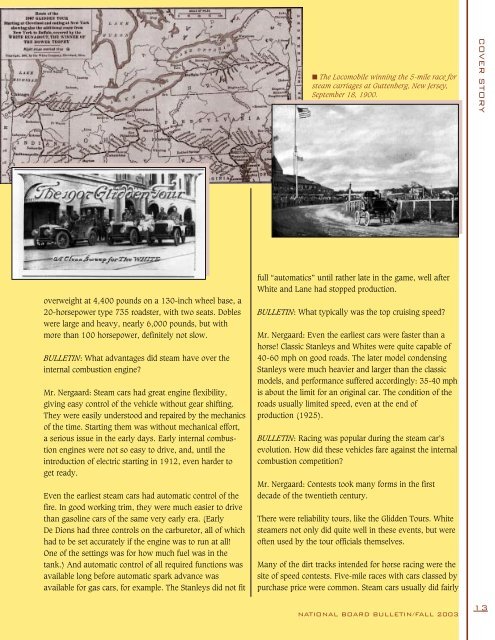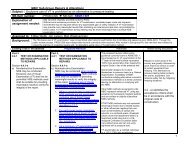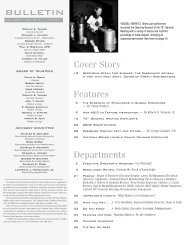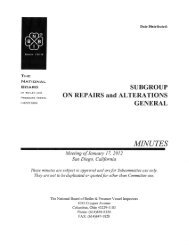bulletin - The National Board of Boiler and Pressure Vessel Inspectors
bulletin - The National Board of Boiler and Pressure Vessel Inspectors
bulletin - The National Board of Boiler and Pressure Vessel Inspectors
You also want an ePaper? Increase the reach of your titles
YUMPU automatically turns print PDFs into web optimized ePapers that Google loves.
overweight at 4,400 pounds on a 130-inch wheel base, a<br />
20-horsepower type 735 roadster, with two seats. Dobles<br />
were large <strong>and</strong> heavy, nearly 6,000 pounds, but with<br />
more than 100 horsepower, definitely not slow.<br />
BULLETIN: What advantages did steam have over the<br />
internal combustion engine?<br />
Mr. Nergaard: Steam cars had great engine flexibility,<br />
giving easy control <strong>of</strong> the vehicle without gear shifting.<br />
<strong>The</strong>y were easily understood <strong>and</strong> repaired by the mechanics<br />
<strong>of</strong> the time. Starting them was without mechanical effort,<br />
a serious issue in the early days. Early internal combustion<br />
engines were not so easy to drive, <strong>and</strong>, until the<br />
introduction <strong>of</strong> electric starting in 1912, even harder to<br />
get ready.<br />
Even the earliest steam cars had automatic control <strong>of</strong> the<br />
fire. In good working trim, they were much easier to drive<br />
than gasoline cars <strong>of</strong> the same very early era. (Early<br />
De Dions had three controls on the carburetor, all <strong>of</strong> which<br />
had to be set accurately if the engine was to run at all!<br />
One <strong>of</strong> the settings was for how much fuel was in the<br />
tank.) And automatic control <strong>of</strong> all required functions was<br />
available long before automatic spark advance was<br />
available for gas cars, for example. <strong>The</strong> Stanleys did not fit<br />
■ <strong>The</strong> Locomobile winning the 5-mile race for<br />
steam carriages at Guttenberg, New Jersey,<br />
September 18, 1900.<br />
full “automatics” until rather late in the game, well after<br />
White <strong>and</strong> Lane had stopped production.<br />
BULLETIN: What typically was the top cruising speed?<br />
Mr. Nergaard: Even the earliest cars were faster than a<br />
horse! Classic Stanleys <strong>and</strong> Whites were quite capable <strong>of</strong><br />
40-60 mph on good roads. <strong>The</strong> later model condensing<br />
Stanleys were much heavier <strong>and</strong> larger than the classic<br />
models, <strong>and</strong> performance suffered accordingly: 35-40 mph<br />
is about the limit for an original car. <strong>The</strong> condition <strong>of</strong> the<br />
roads usually limited speed, even at the end <strong>of</strong><br />
production (1925).<br />
BULLETIN: Racing was popular during the steam car’s<br />
evolution. How did these vehicles fare against the internal<br />
combustion competition?<br />
Mr. Nergaard: Contests took many forms in the first<br />
decade <strong>of</strong> the twentieth century.<br />
<strong>The</strong>re were reliability tours, like the Glidden Tours. White<br />
steamers not only did quite well in these events, but were<br />
<strong>of</strong>ten used by the tour <strong>of</strong>ficials themselves.<br />
Many <strong>of</strong> the dirt tracks intended for horse racing were the<br />
site <strong>of</strong> speed contests. Five-mile races with cars classed by<br />
purchase price were common. Steam cars usually did fairly<br />
NATIONAL BOARD BULLETIN/FALL 2003<br />
COVER STORY<br />
13








